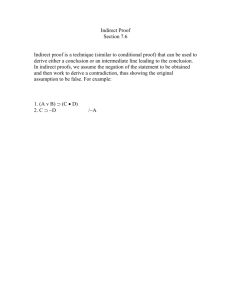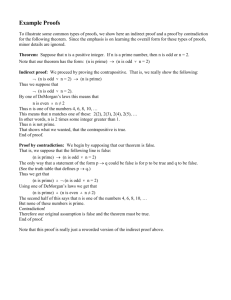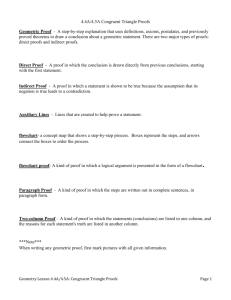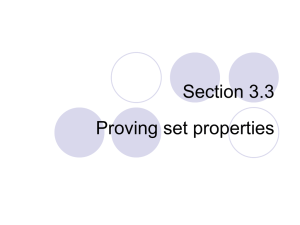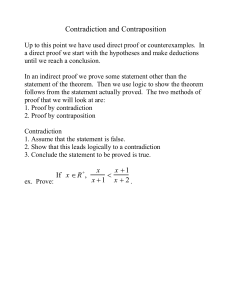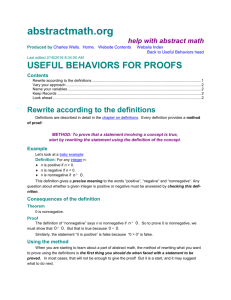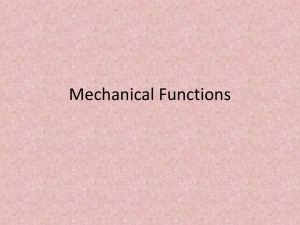Indirect Proofs - Camden Central School
advertisement
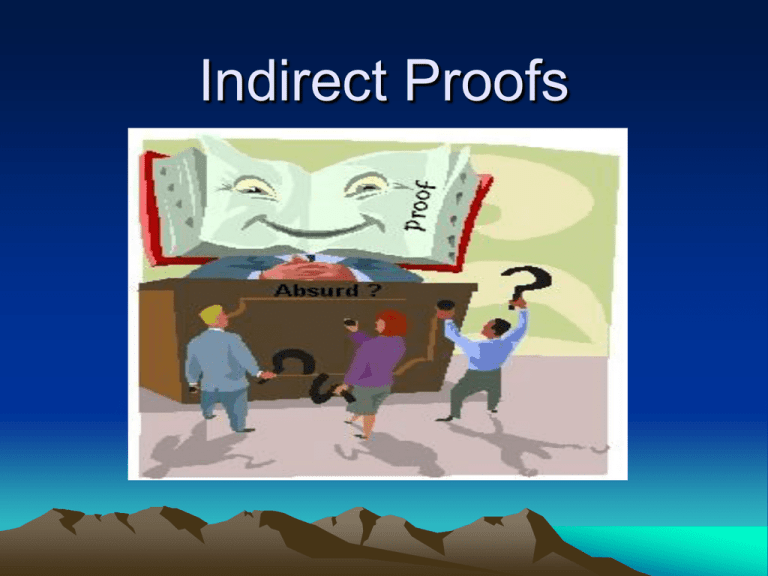
Indirect Proofs Indirect Proofs • When trying to prove a statement is true, it may be beneficial to ask yourself, "What if this statement was not true?" and examine what happens. • This is the premise of the Indirect Proof or Proof by Contradiction. Indirect Proofs • Indirect Proof: Assume what you need to prove is false, and then show that something contradictory (absurd) happens. How to Write an Indirect Proof • Step 1: List givens • Step 2: Write the negation of what you are trying to prove. • Step 3: Use logical reasoning to show that the assumption leads to a contradiction within the proof • Step 4: Write what you were originally proving for your final statement, with the reason being contradiction with the appropriate steps that were contradicted. (i.e. contradiction 2,5) How to Write an Indirect Proof • Examples: State the assumption for starting an indirect proof • a. ABC is not equal to XYZ ABC is equal to XYZ • b. 3 is an obtuse angle 3 is not an obtuse angle • c. DEF is an equilateral triangle DEF is not an equilateral triangle • d. Points J , K , and L are collinear Points J , K , and L are not collinear Pg. 10 #1 Statement X Y 1. XZ YZ 2. X Y 1. Given 3. XZ YZ 3. Sides opposite congruent angles in a triangle are congruent 4. Contradiction 1,3 Z 4. X Y Given : XZ YZ Prove : X Y Reason 2. Assumption


